Sage is a grey-green color. Flowers of this hue are relatively rare. There are, of course, Sage, or Salvia, plants in a range of hues with a range of uses. In this article about Sage Flowers, we’ll have a brief look at Sage Plants and then we’ll look at a variety of flowers that have the sage green color.
Green flowers are associated with meanings such as renewal, good fortune, youth, and optimism. There are several plants that produce green flowers; some of which have sage green tones.

Sage green flowers have a quiet beauty and can have a very moderating effect on more vibrant and demanding colors. Green flowers work well with bronze and coppery leaves, and with silver and grey leaves.
There’s such a variety of shapes and sizes in green flowers, so whether you’re a fan of cottage garden ideas or modern garden ideas, you’ll find something with a green bloom that just adds that magic ingredient.
Let’s start by looking at Sage Plants and then move on to sage-colored blooms.
1. Scarlet Sage (Salvia Spendens)
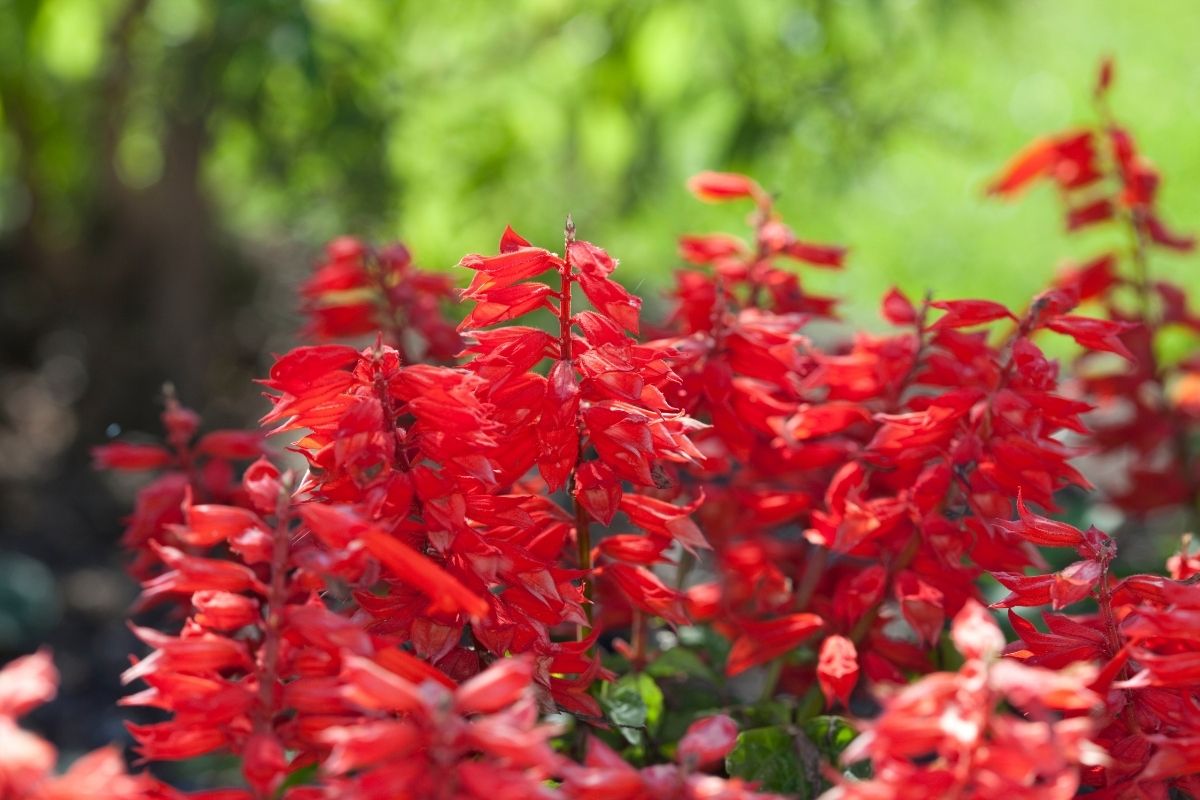
Scarlet Sage, or Red Salvia, is a tropical perennial, native to Brazil, which is usually grown as an annual. The species has bright scarlet flowers, although cultivars come with white, salmon, pink, lavender, burgundy, and orange blossoms.
2. Mealycup Sage (Salvia Farinacea)
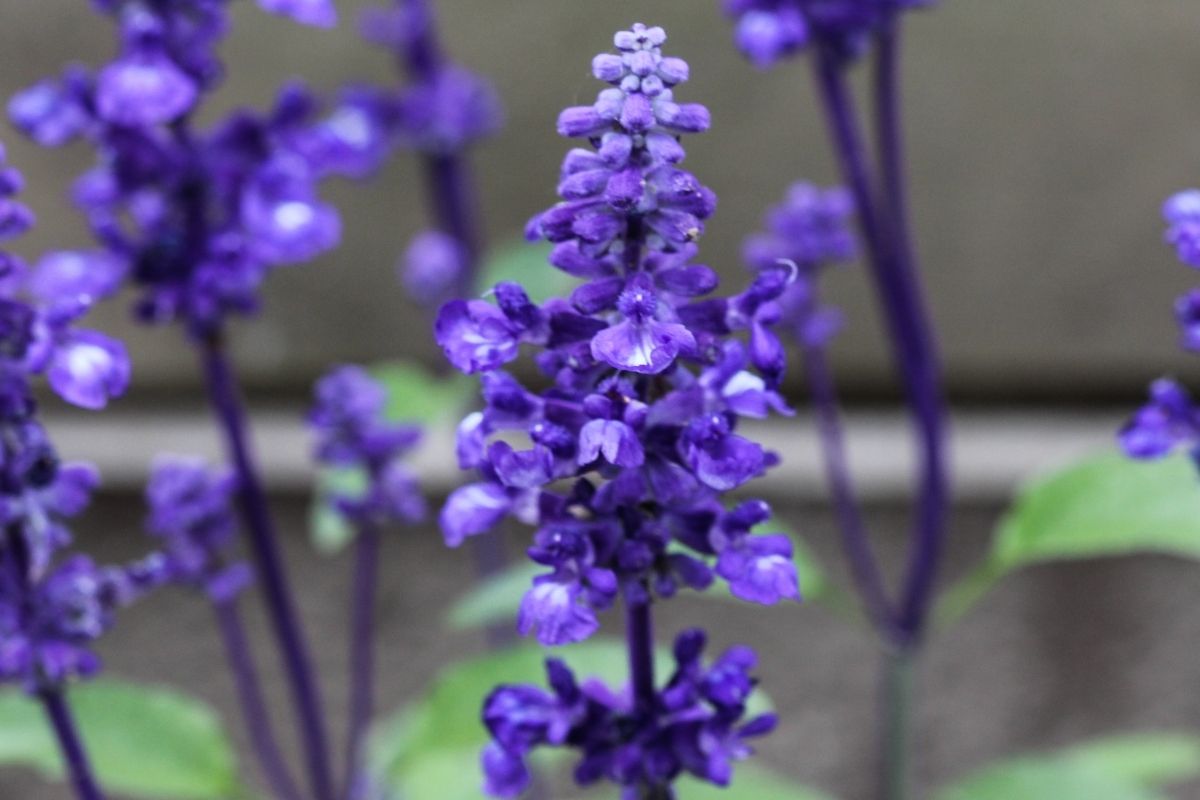
Mealycup Sage is native to Texas and Mexico and has blue, purple, and lavender cultivars. Victoria Blue, which has genuinely blue flowers, and Evolution are popular choices.
3. Texas Sage (Salvia Coccinea)
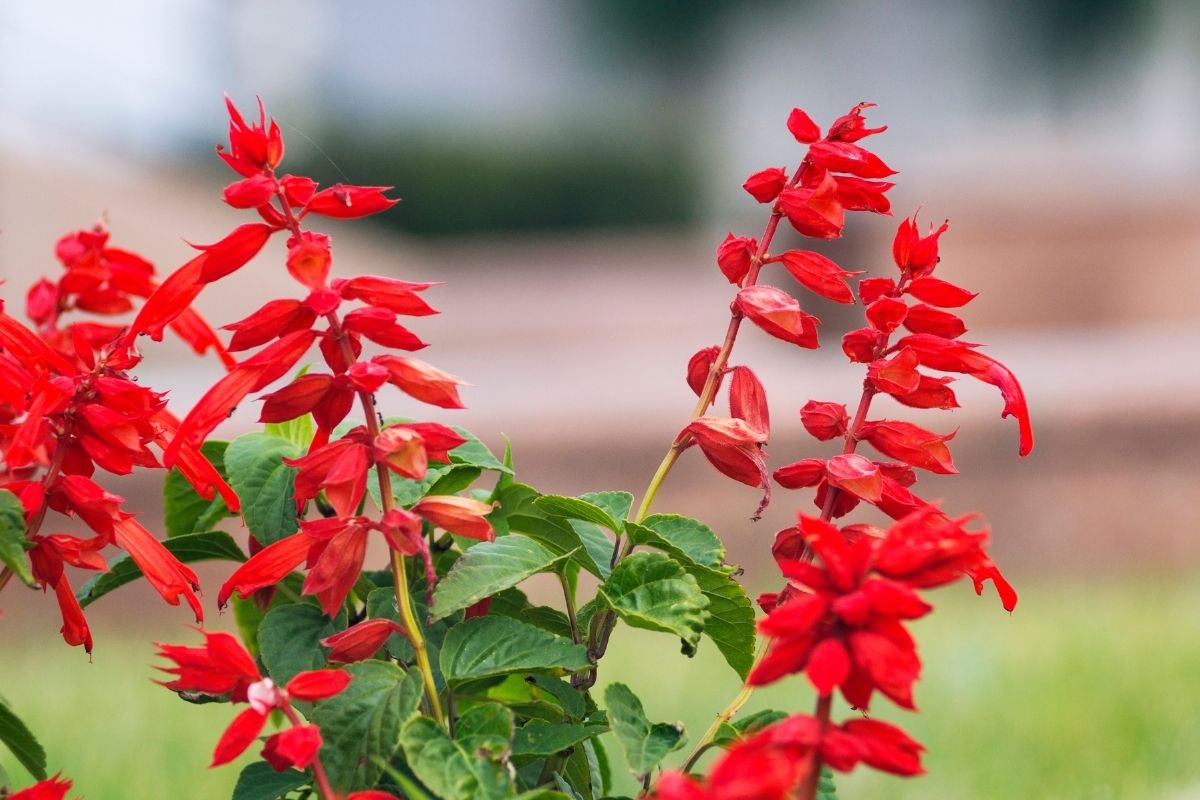
Texas Sage is native to the Southern United States and Mexico and has red flowers, but there are cultivars with pink and coral blooms. Summer Jewel Pink is a smaller plant with dainty blooms.
4. Woodland Sage (Salvia Nemerosa)

Woodland Sage, or Violet Sage, is native to Europe and west-central Asia. It’s a perennial salvia that blooms in shades of purple and lavender. These vigorous plants bear lance-shaped leaves and many spikes of purplish-blue blooms. Popular cultivars include Marcus, Caradonna, Sensation, and Blue Hill.
5. Autumn Sage (Salvia Greggii)

Autumn Sage is native to Texas and northern Mexico. It’s a perennial, shrubby plant with hot pink flowers. Two popular cultivars are Wild Thing, with pink-hued flowers, and Raspberry Delight, with deeper pink blooms.
6. Wood Sage (Salvia x Sylvestris)

There are hybrid salvias, and this is one of them. Popular cultivars of this hybrid are May Night, which has blue-violet flowers, and Pink Dawn, with pink flowers.
7. Common Sage (Salvia Officinalis)
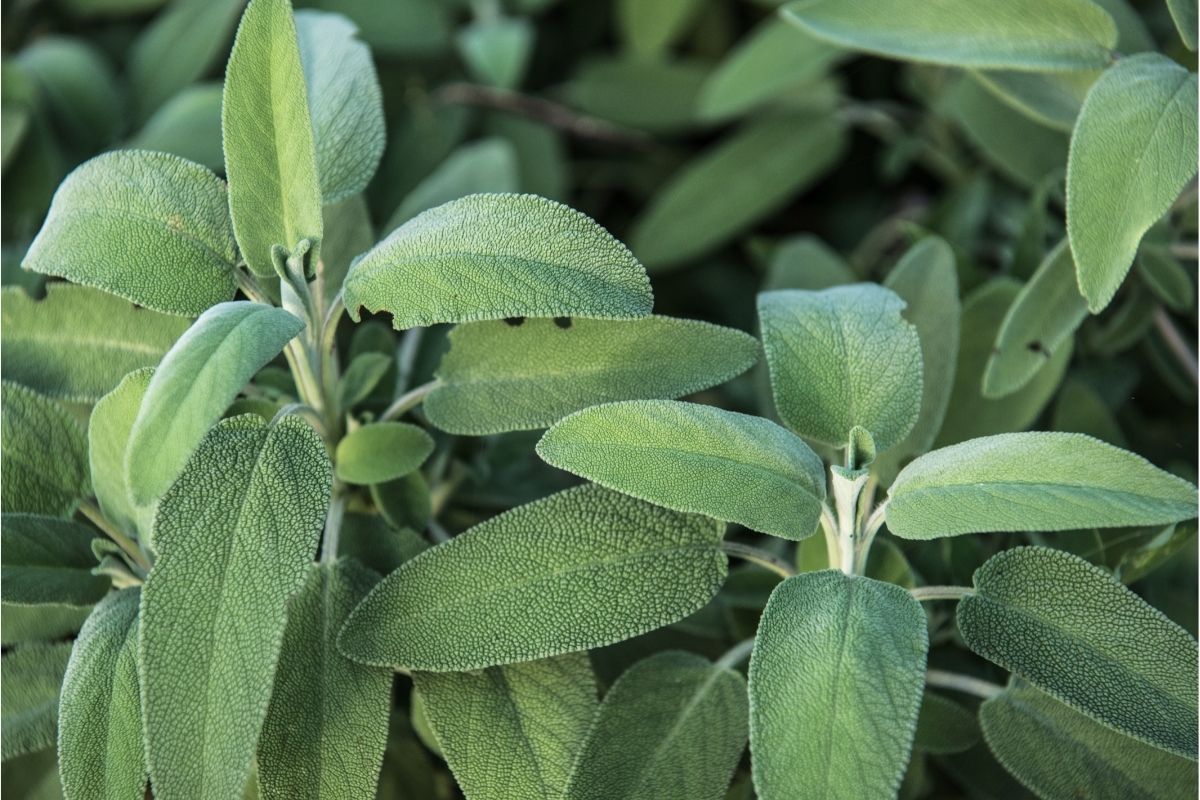
Common Sage is a culinary herb and is great in herb gardens or as an ornamental plant in border gardens or rock gardens. The lavender-blue flowers bloom on spikes.
Native to North Africa and the Mediterranean. As well as being used in cooking, the soft, silvery-green leaves can be used to make tea. The smaller dwarf variety blooms with purplish-blue flowers. Purple Garden Sage has purple foliage when young.
Golden Sage is a creeping Sage with gold and green variegated leaves. Tricolor Garden Sage has uneven variegation including white accenting. Berggarten Sage does not bloom but has lovely soft, silvery green leaves.
8. Pineapple Sage (Salvia Elegans)
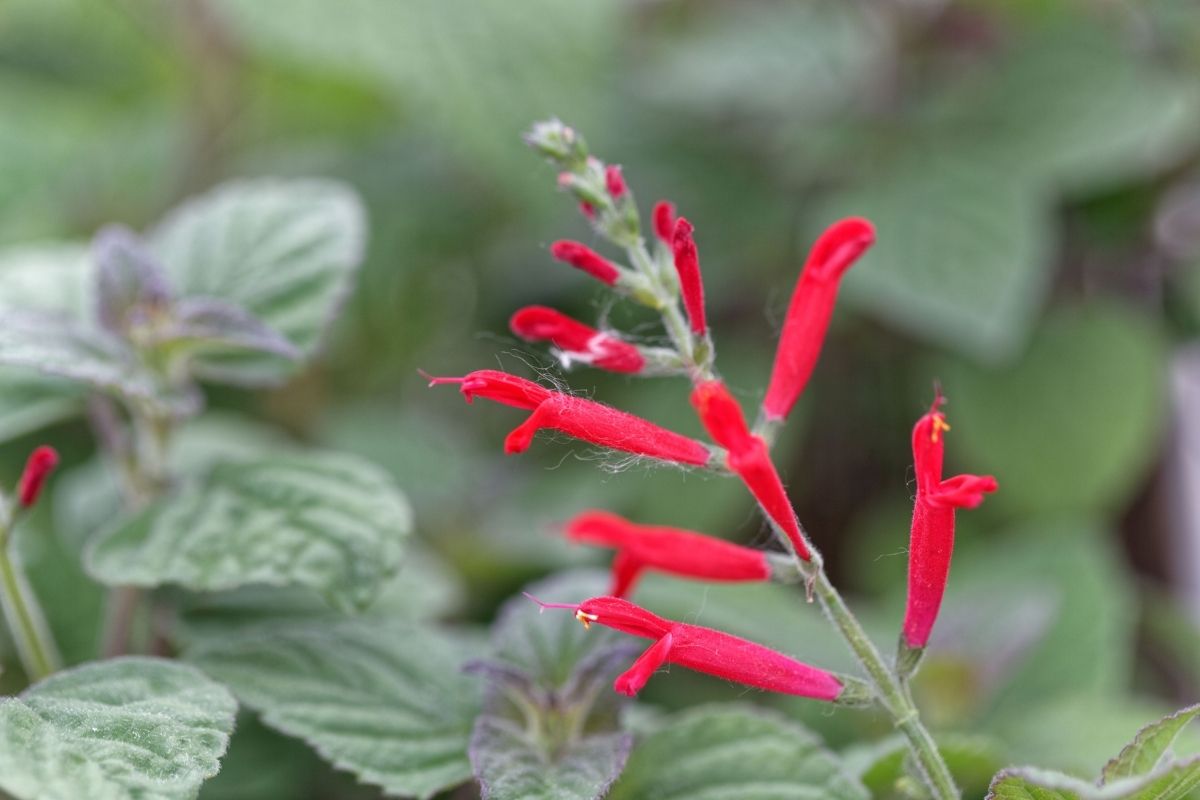
Pineapple Sage is so named due to its pineapple-like scent. Native to Mexico and Guatemala, it produces tubular red flowers that attract butterflies and hummingbirds and is said to have medicinal uses as well.
9. Mexican Bush Sage (Salvia Leucantha)
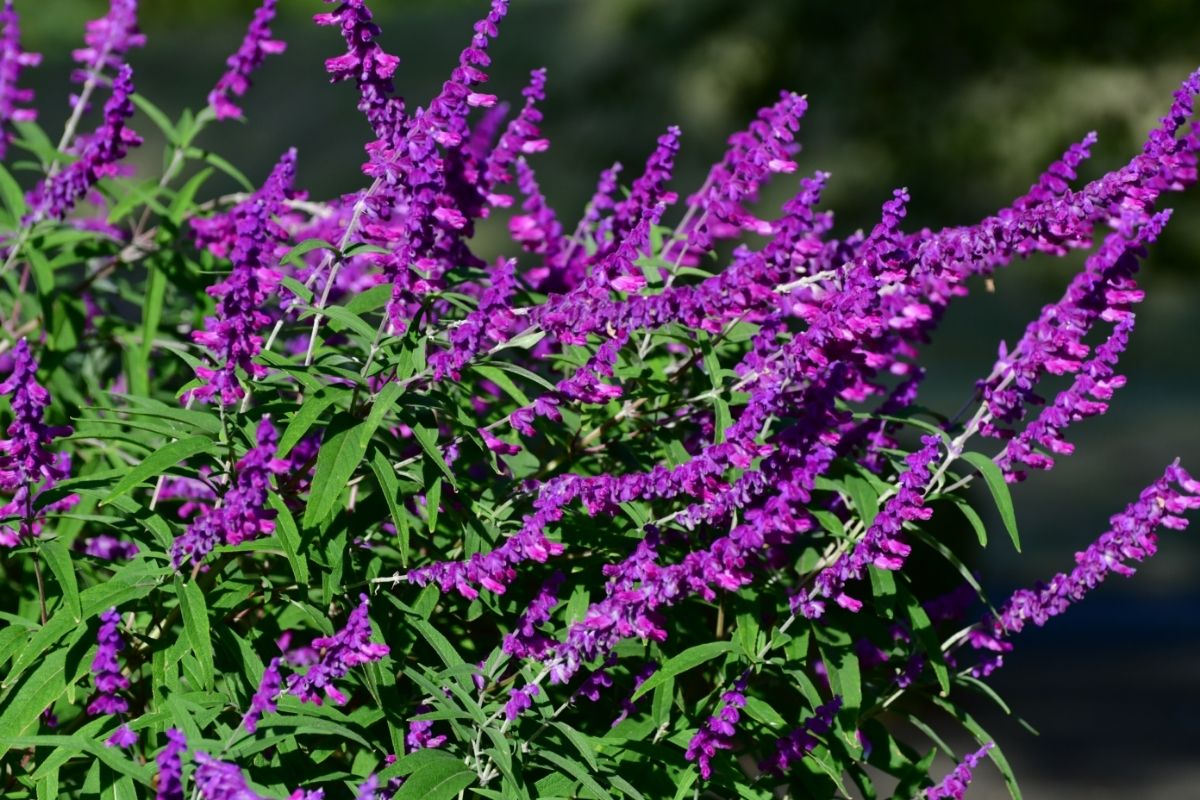
Mexican Bush Sage is, as its name suggests, native to Mexico and is also native to Central America. It blooms with purple or white-and-purple flowers and has velvety greyish-green leaves. Butterflies and hummingbirds are very fond of this species.
Related: Decoration, Spice, Medicine – Get To Know 17 Types Of Versatile Sage Plants
10. Diviner’s Sage (Salvia Divinorum)
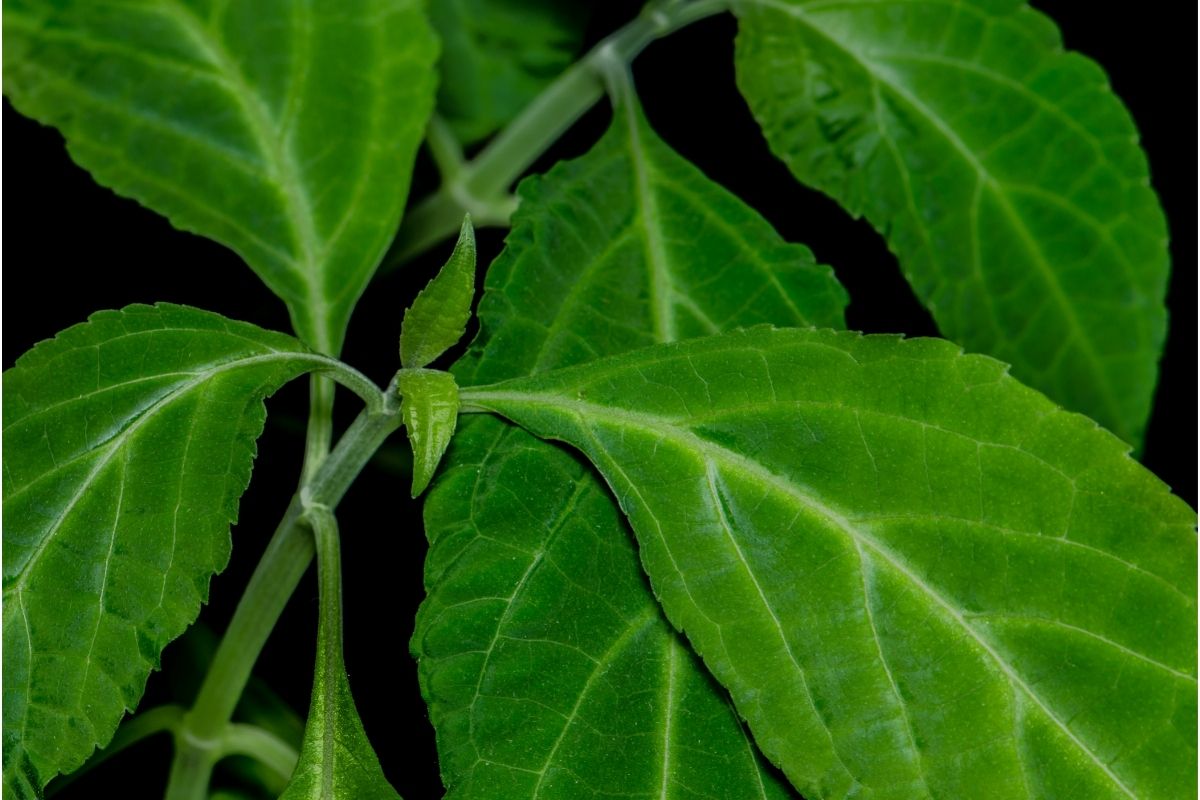
Diviner’s Sage is rarely grown as an ornamental, despite having pretty purple flowers. There’s a substance in the leaves that produces hallucinations and the plant has a long history of use by shamans of the Mazatec tribes of southern Mexico for divination ceremonies.
The plant is now illegal in some U.S. states and decriminalized in others. Native to Southern Mexico.
11. Grape Scented Sage

Rather bizarrely, given its name, the plant doesn’t smell like grapes. Instead, it has a scent that is more like freesia and attracts hummingbirds. The leaves and flowers can be steeped to make tea.
Sage Green Flowers
12. Bells Of Ireland
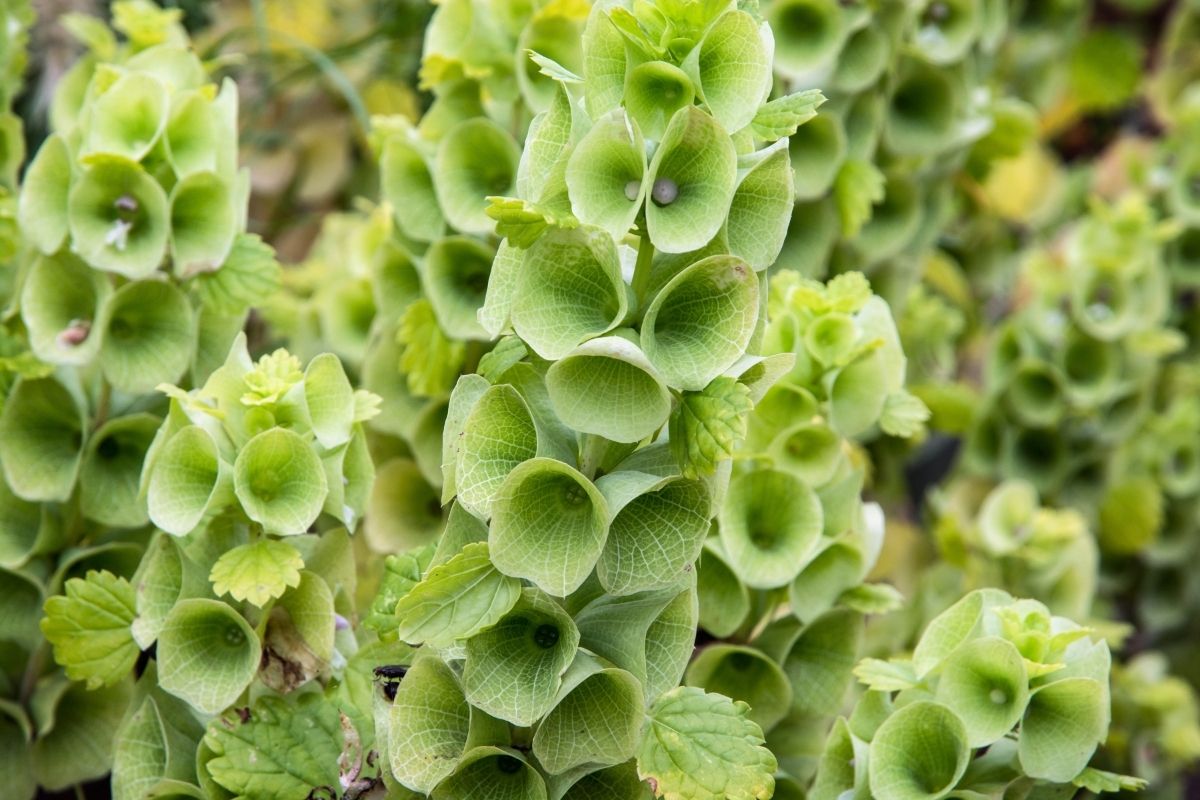
Multiple cup-shaped blooms grow on a single stalk. The blooms have a thin papery texture. These flowers are great in flower arrangements because they add height to the arrangement. Bells of Ireland flowers are beautiful as cut or dried flowers and, most splendid of all, growing happily in the garden.
13. Green Ball Sweet William Dianthus
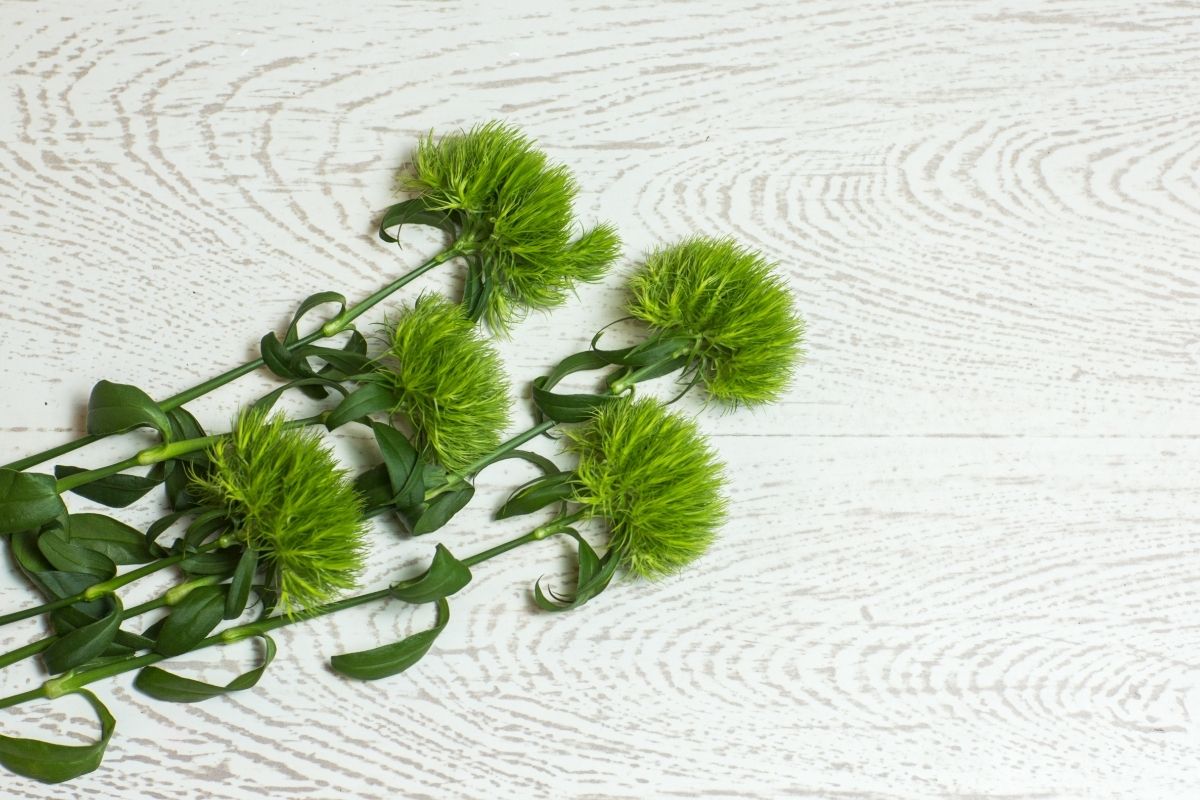
As its name suggests, this perennial flower has soft and fuzzy round balls of a gentle green that just about makes the green side of the sage green spectrum. They are superb in beds and containers.
14. Chrysanthemum
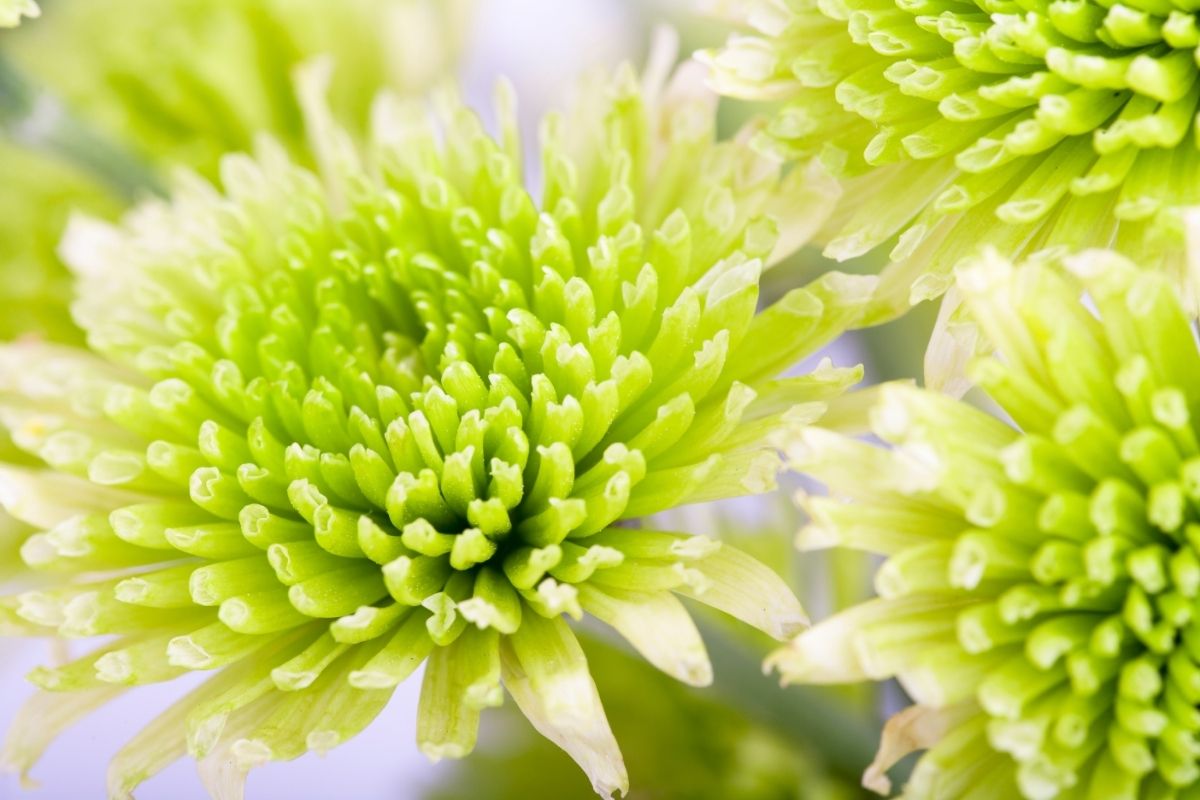
Chrysanthemums come in a variety of shades and shapes, including green.
Dahlia
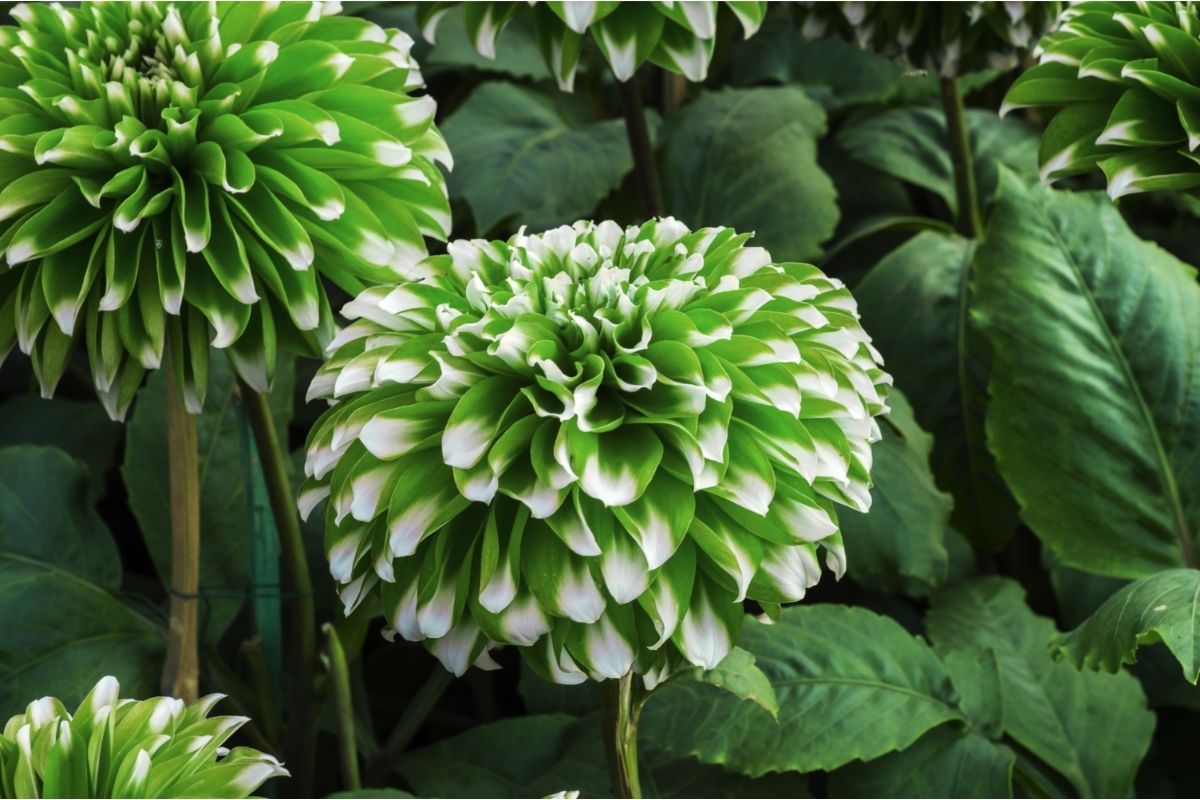
Dahlias, a very popular flowering plant, can be found in a myriad of colors. Thankfully, there is also a green Dahlia.
15. Flowering Tobacco
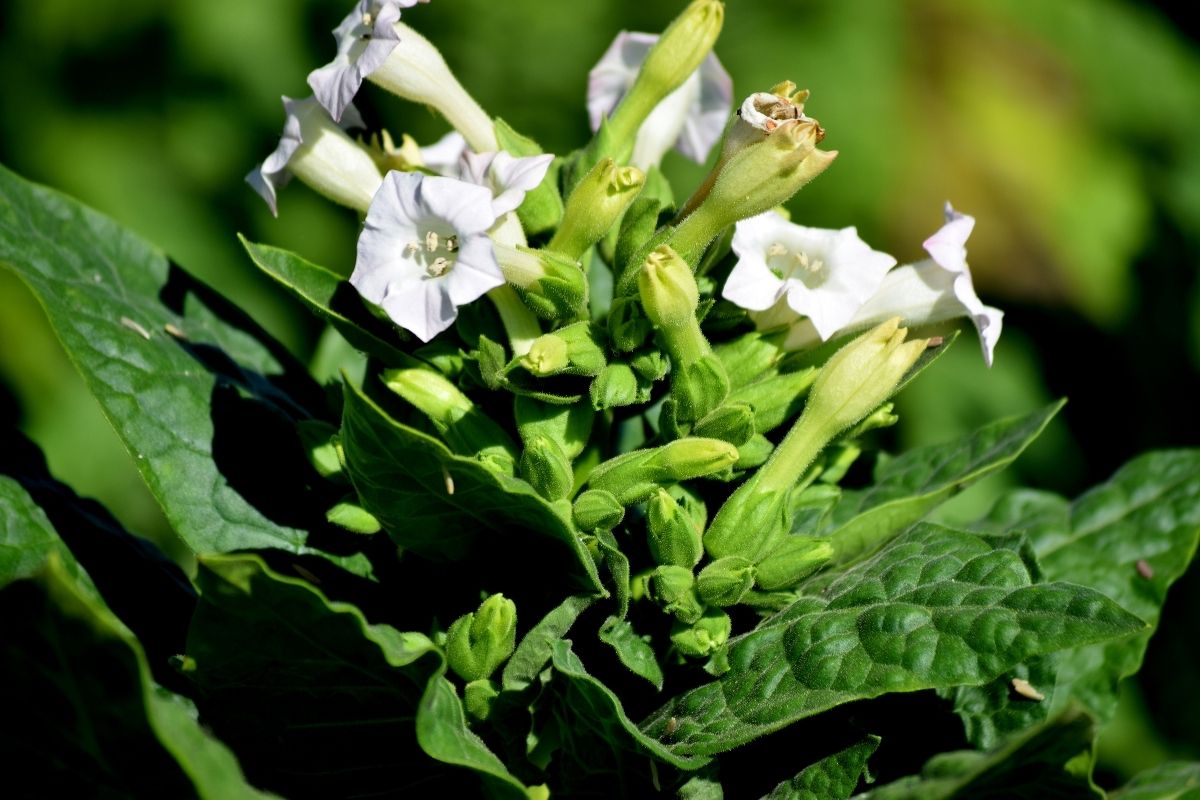
With full-bodied green stalks and lots of leaves, this plant produces small, dainty flowers that are sage green at the base, becoming lighter green towards the end of the petals. It’s worth noting that they’re toxic, so keep children and animals away!
16. Gerbera Daisy
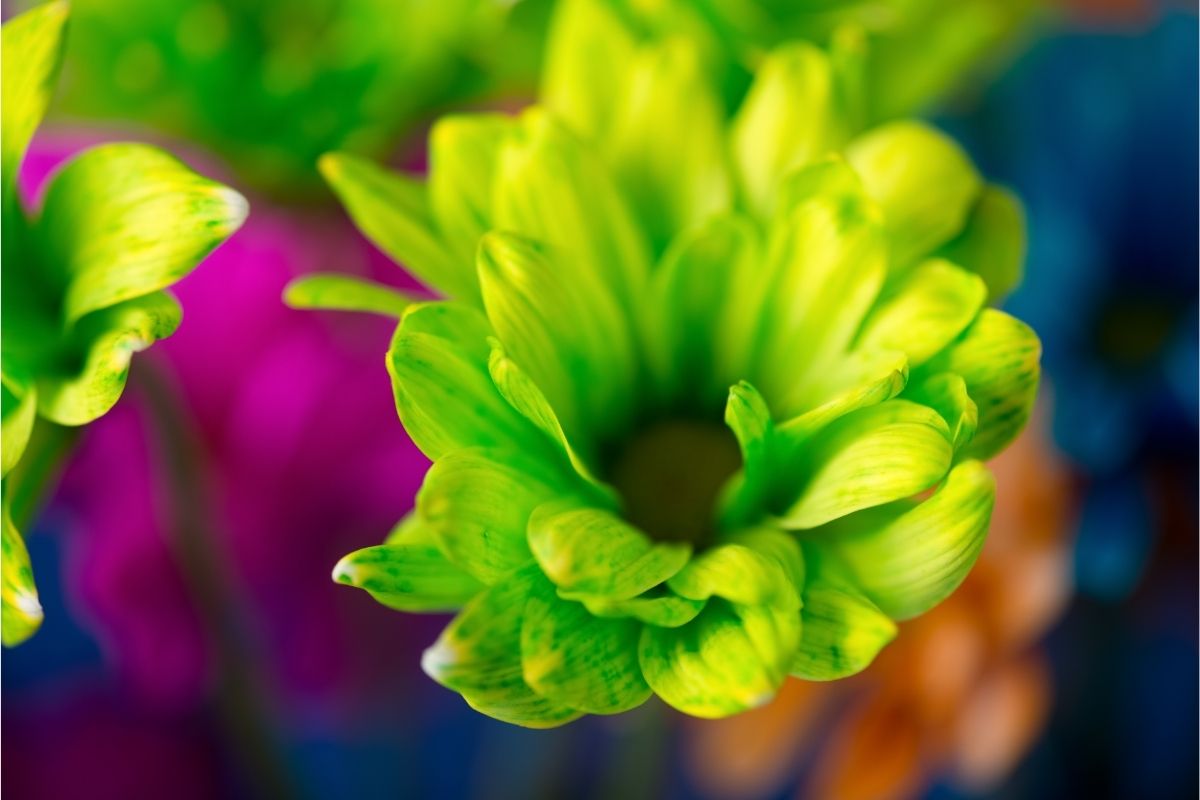
Gorgeous blooms in pale green with just a hint of greyish green, these flowers cannot help but give you a spring in your step. They just ooze cheerfulness!
17. Hellebores
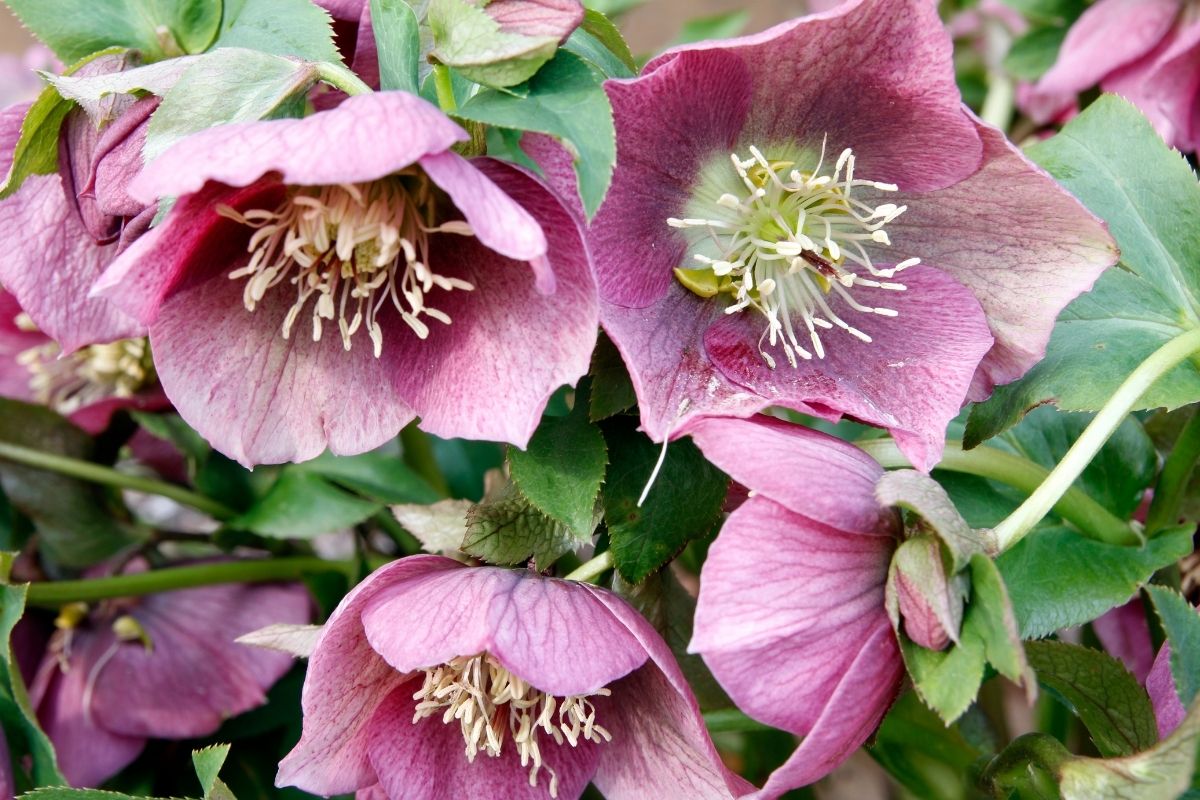
Also known as Lenten Roses, these are elegantly beautiful flowers. The blooms grow downward-facing and look gorgeous floating in a bowl of water. The pale grey sheen to the green makes the color particularly attractive and unusual.
18. Lady’s Mantle Or Alchemilla
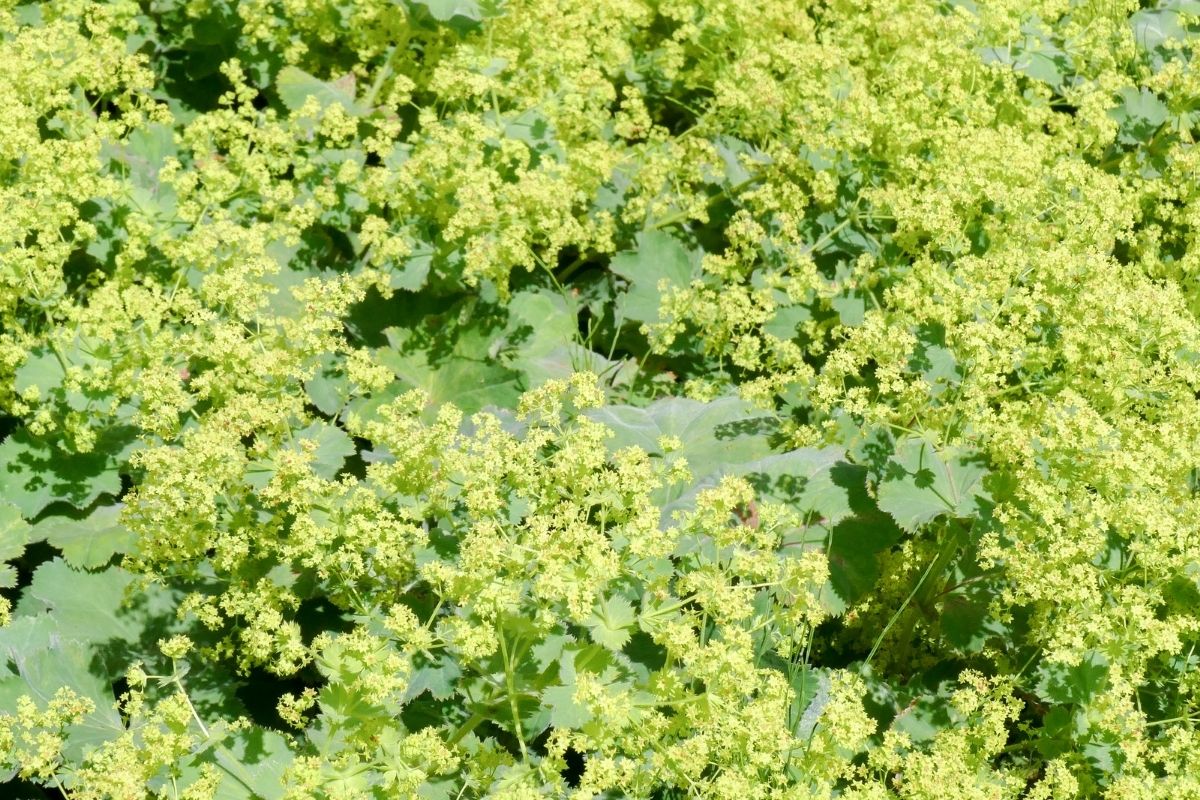
Very much a pale sage in color tones, Lady’s Mantle is a low-growing border plant. It produces clusters of tiny yellow-greenish flowers and this, combined with the greyish-green foliage, gives an overall sage effect.
In bouquets, this flower looks wonderful intermingled with other flowers, linking all the other colors together in a green mist.
19. Green Rose
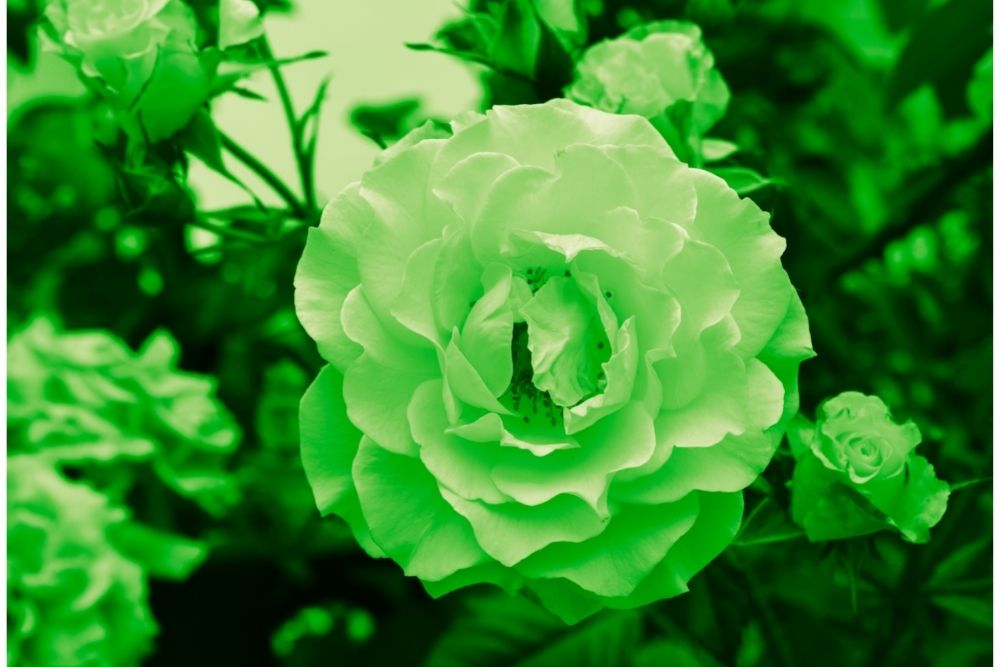
Green roses represent hope and optimism. They’re perfect for a bouquet and are certainly eye-catching. There’s the slightest hint of smoky grey, which is why it is included in the sage green category.
20. Envy Zinnia
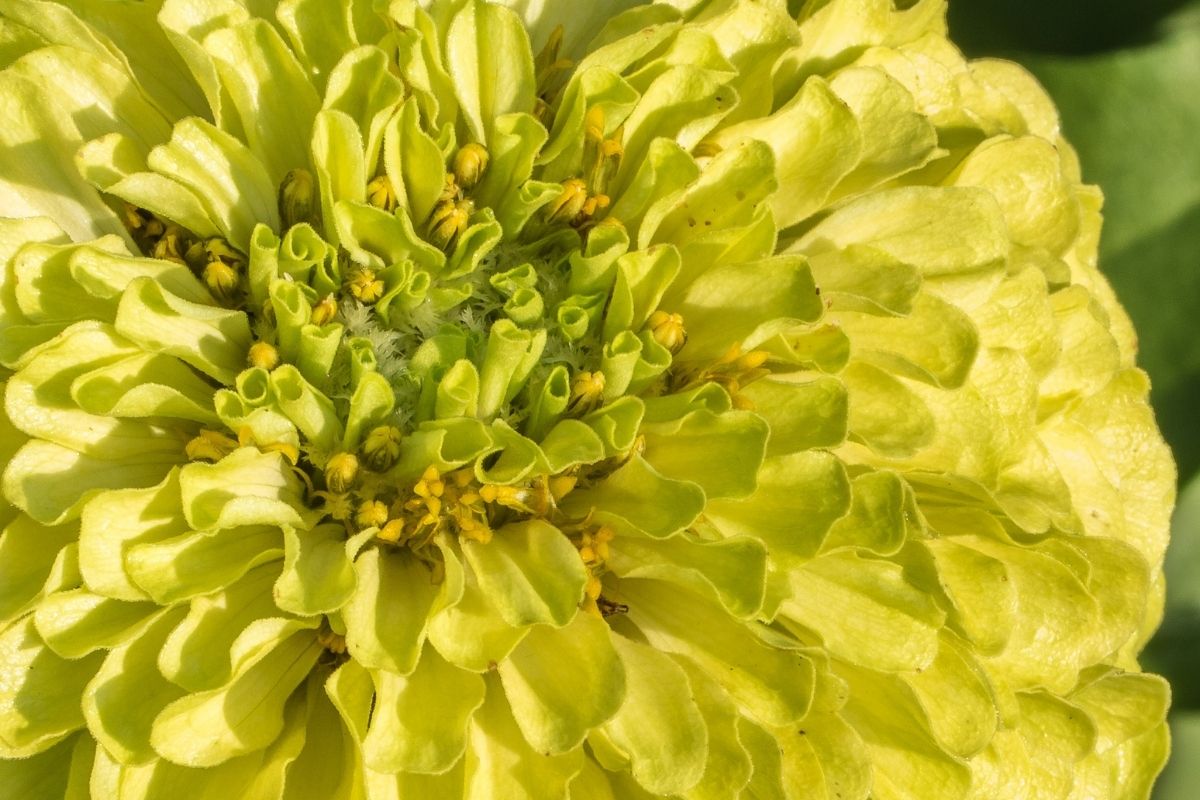
Even the ever-colorful Zinnia can be found in a sage green shade. Having large fully-double flowers held on stout stems on tall plants, Zinnias are striking blooms. This green Zinnia certainly will make the other flowers in any bouquet green with envy!
21. Green Jewel Echinacea
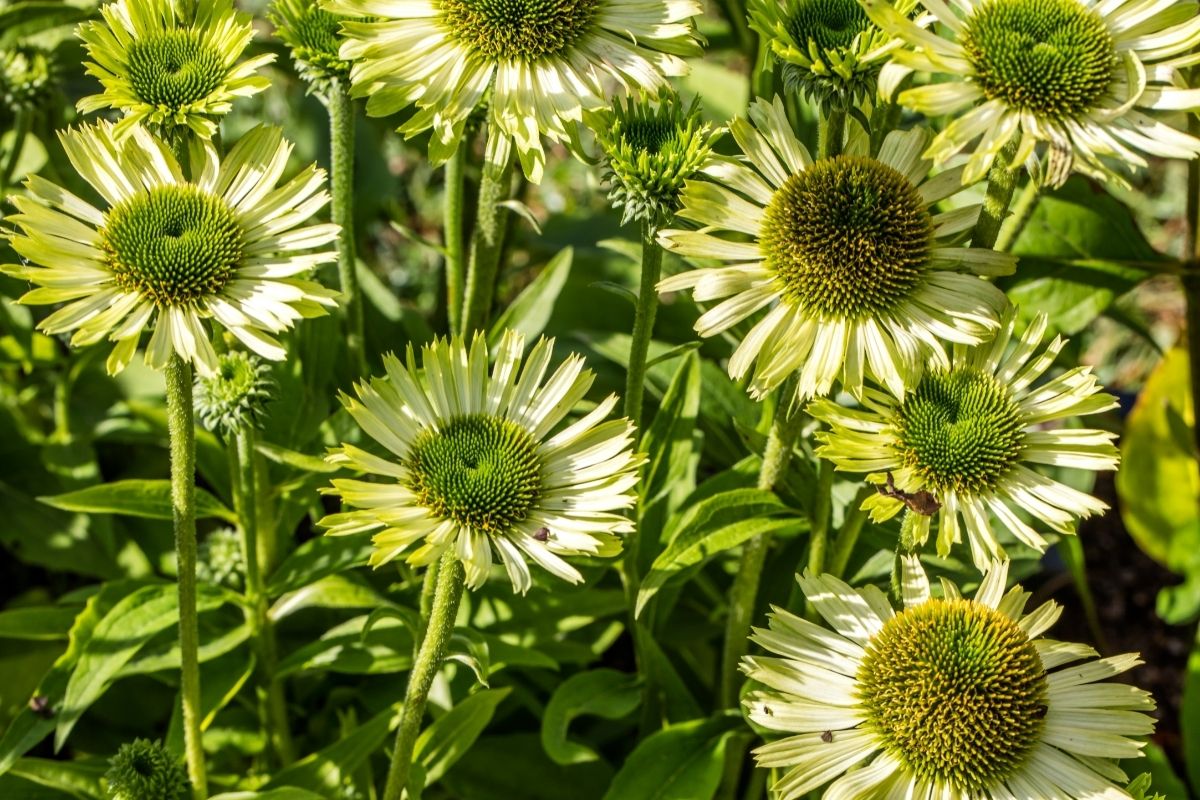
An entirely green coneflower; the ring of petals and the domed cone are green. The upward-facing flowers are held on stout stems. The petals are a pale sage green and the centers a more emerald green. It really is a jewel of a flower!
22. Green Passion Clematis
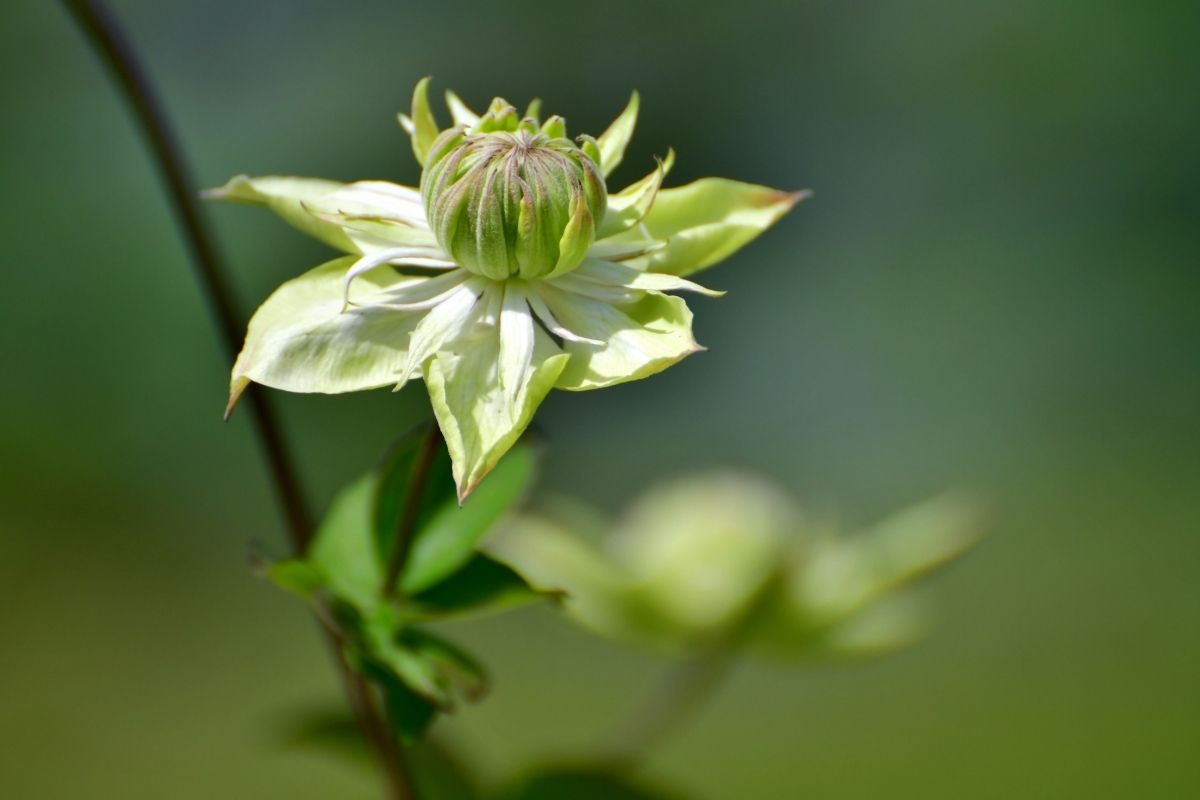
This wonderful, fully double, green-flowered Clematis has a slightly silvered back to the petals giving a two-tone effect, with white tips to the later flowers. These blossoms will certainly instill passion in the eye of its beholder! This Clematis works great with pergola ideas.
23. Anastasia Green Chrysanthemum
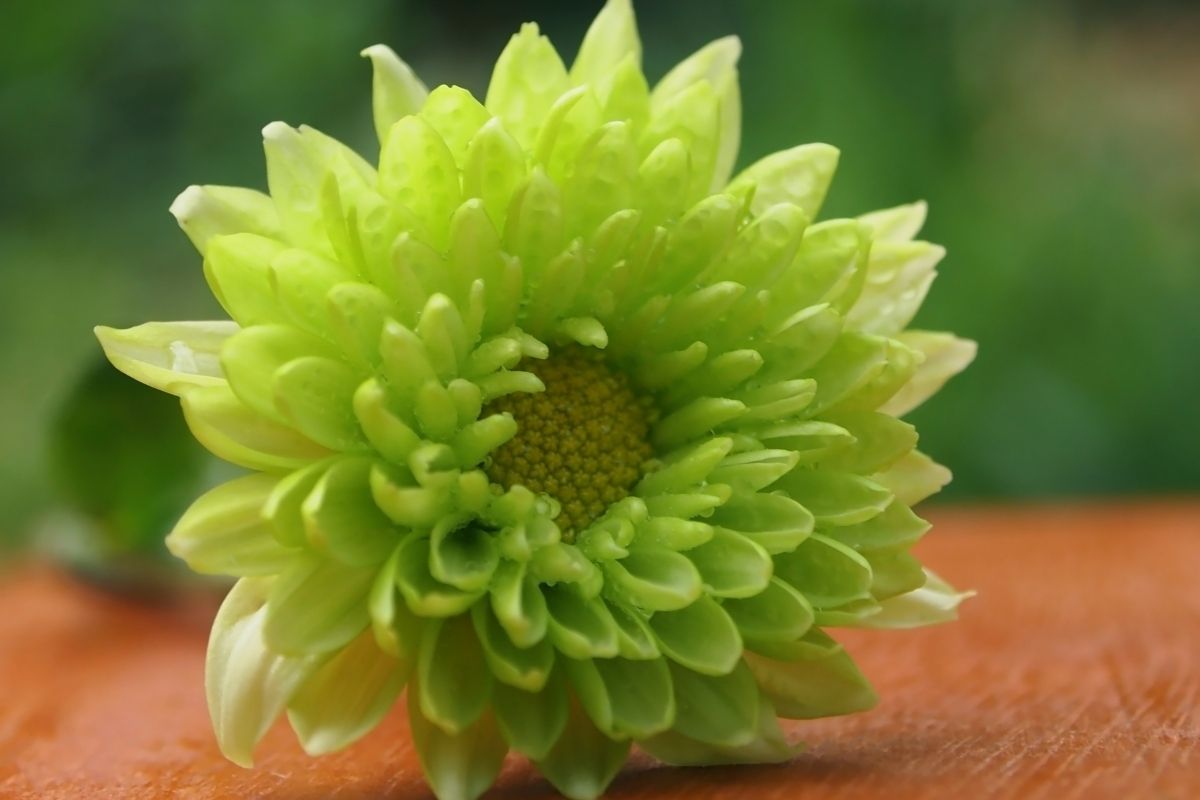
A beautiful pale shade of sage green, with spidery petals arching in towards the center, creating a captivating flower.
24. Green Petal Celandine (Ficaria verna)
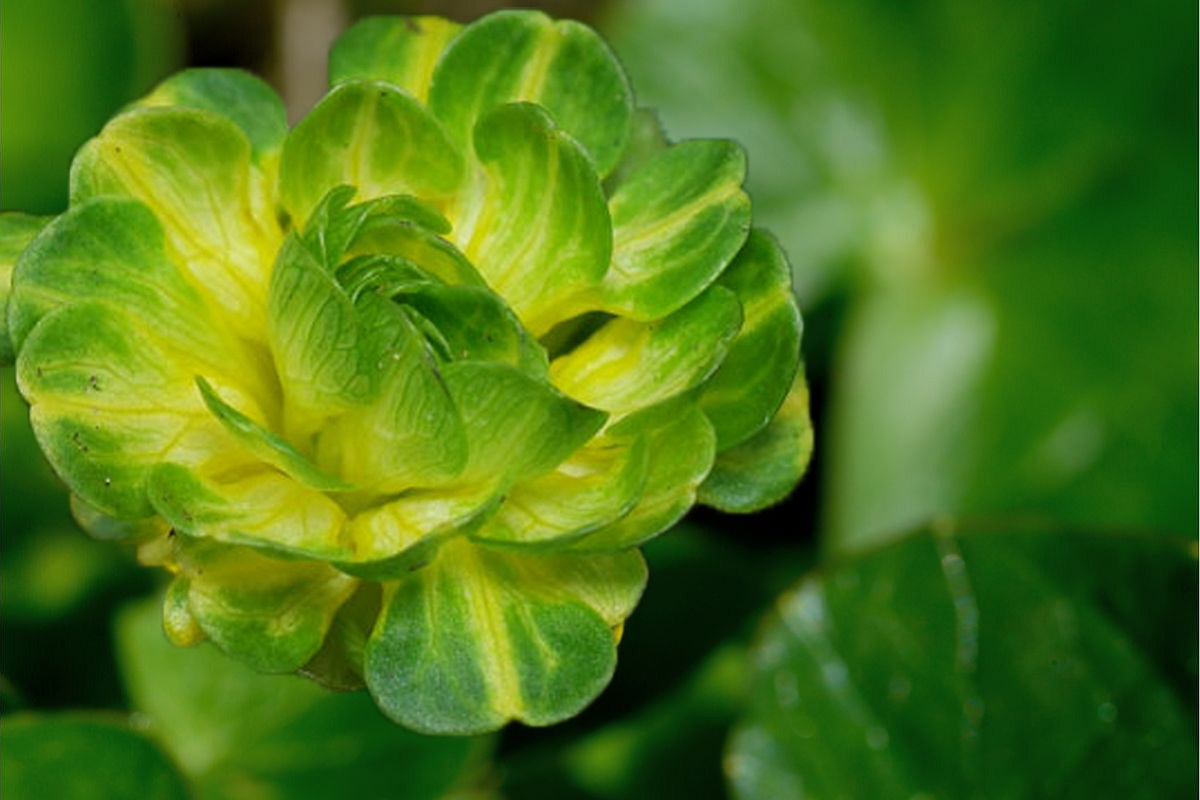
A cute little Celandine with double green flowers, streaked in yellow. It is very endearing and makes a perfect addition to the garden or a floral arrangement.
25. Cockscomb
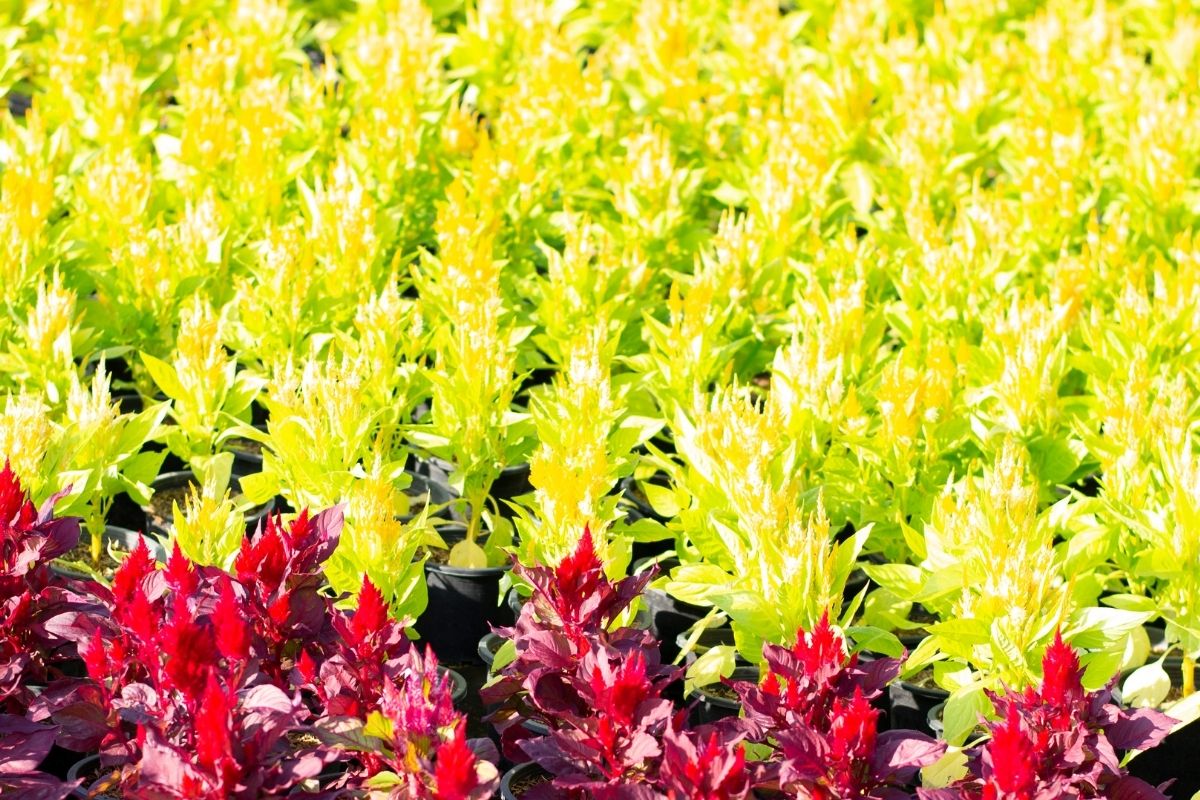
The upward spires of these blooms demand attention and get it. Their unique twisted form is what makes them so desirable. This is an absolutely splendid shade of sage green that adds dimension to any colorful display.
26. Sagebrush
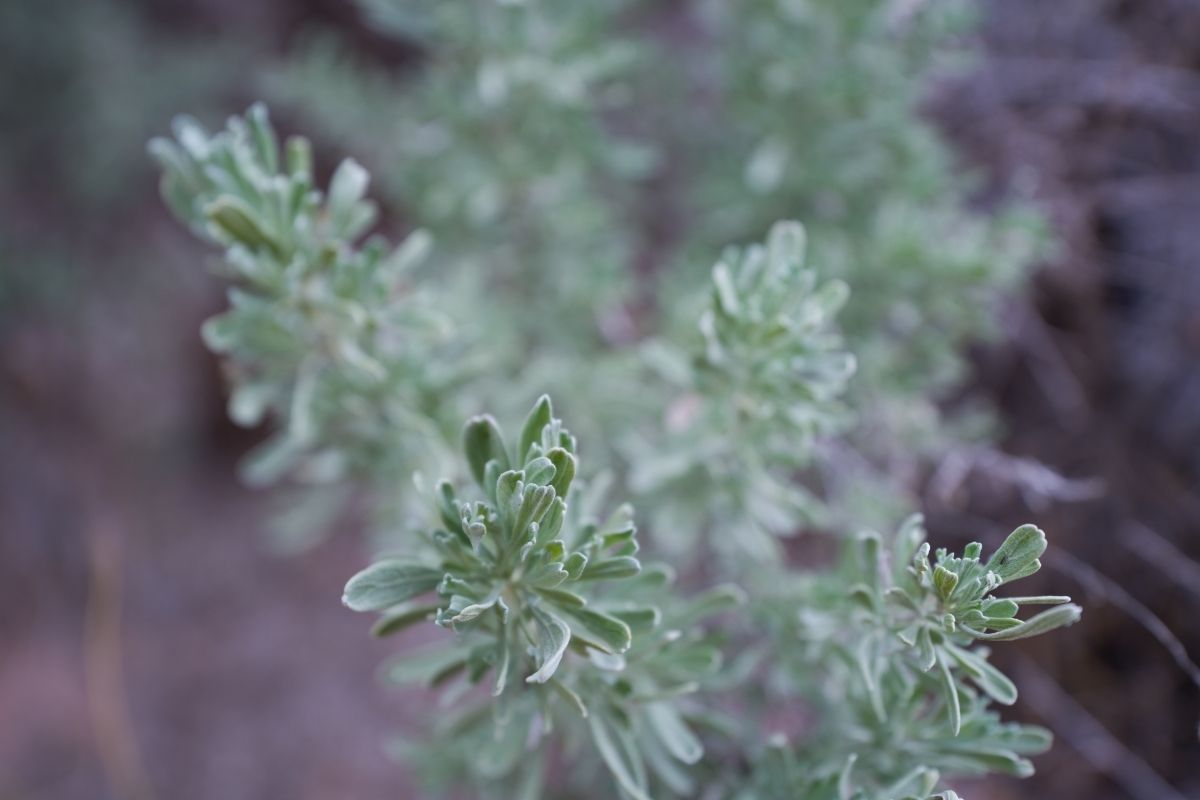
The iconic tumbleweed of many a ‘cowboy film’, Sagebrush is not, in fact, a member of the Salvia, or Sage, family. The Sagebrush is a member of the sunflower family, Asteraceae, that’s wind-pollinated versus insect-pollinated.
27. Sage Or Salvia Plants
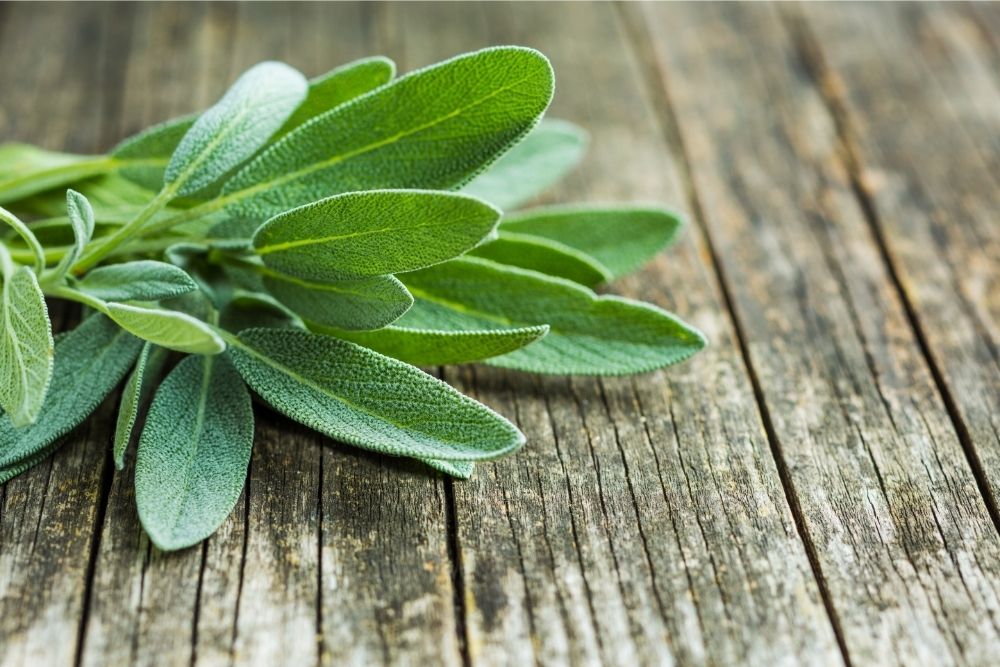
Salvia is quite a large genus of plants, included in which are annuals, perennials, and even shrubs.
There are more than 1,000 species in the genus. The Salvia genus is in the mint (Lamiaceae) family of plants, so many of these species have a strong, pleasant scent. The scent and the flowers attract bees, butterflies, and hummingbirds.
They usually have a long bloom period and are great for gardens. They can be grown for culinary, medicinal, or ornamental purposes and all have aromatic foliage. They may be blooming or non-blooming.
The foliage comes in sage green, variegated purple/green, or variegated gold. As to the blosso
Conclusion
If you are a fan of sage green flowers then you have to look a bit harder than for some other colors but the hunt is well worth it.
Flowers with hues of sage green are gentle on the eye and cannot fail to delight anyone lucky enough to look upon them.
If you are a fan of Sage or Salvia Plants then it is far easier to find what you’re after; be it for ornamental, medicinal, or culinary purposes.







